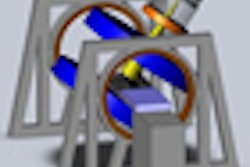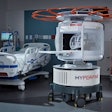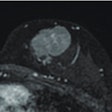Tuesday, November 27 | 10:40 a.m.-10:50 a.m. | SSG12-02 | Room N226
Volume growth analysis through diffusion-weighted imaging (DWI) and perfusion-weighted imaging (PWI) MRI sequences may be a clinically useful biomarker for monitoring low-grade gliomas, even when perfusion and spectroscopy are normal, according to a study by U.K. researchers.This study from the Yorkshire and Humber Strategic Health Authority and led by Dr. Jennifer Larsen, an academic clinical fellow in clinical radiology, evaluated MR biomarkers such as volumetric analysis, MR spectroscopy, DWI, and PWI to monitor low-grade gliomas.
This retrospective study looked at 224 MRI examinations on a 3-tesla magnet from 69 adults with supratentorial low-grade gliomas. There were three subgroups in the analysis: 46 "nontransformers" with stable low-grade gliomas, 14 individuals who underwent malignant transformation on MRI with confirmed grade 3 or 4 histology, and nine malignant gliomas with grade 2 histology.
For all further analysis, 76 individuals with at least three serial MR examinations and no interventions were included in the study.
Based on the MRI results, the mean annualized percentage growth rate for low-grade glioma subjects was 14%, compared with a rate of 57% for malignant glioma subjects in the other two groups. MR spectroscopy did not show statistically significant differences in metabolite ratios between the three subgroups.



.fFmgij6Hin.png?auto=compress%2Cformat&fit=crop&h=100&q=70&w=100)




.fFmgij6Hin.png?auto=compress%2Cformat&fit=crop&h=167&q=70&w=250)











